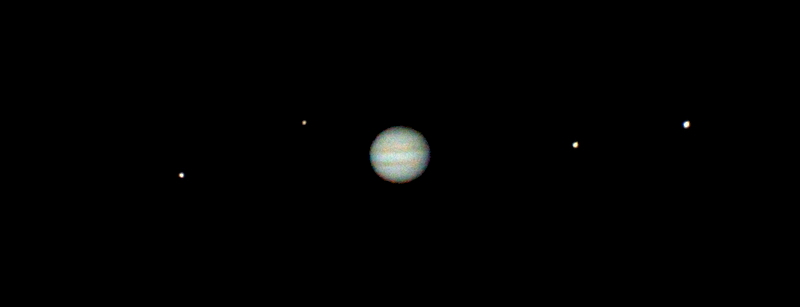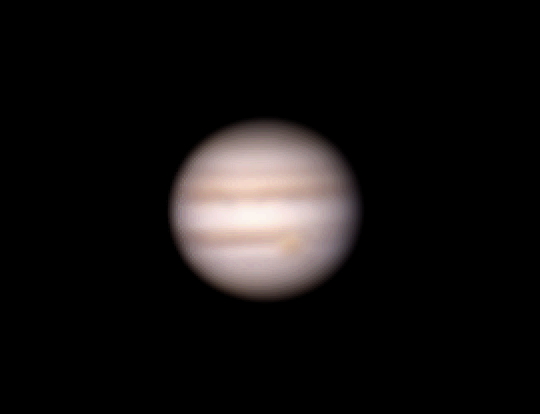
Mercury, Jupiter
Posted: 27 February 2013
The observatory was opened Tuesday, 26 February 2013, at 1806 MST, 64°F. At 1817 MST, I began trying to see Mercury with the 8" telescope, 77X. Not visible. Finally, at 1824 MST, several minutes after sunset, Mercury became faintly visible. The thin crescent phase was very dim against the bright sky. Seeing was not good. Switched to 133X and continued to view Mercury. As the sky slowly became darker, Mercury and its crescent phase were easier to see. Of course, Mercury continued to be lower in the sky, resulting in increasing atmospheric distortion. At 1842 MST, Mercury was 5° above the horizon; the crescent phase was barely discernable. At 1846 MST, Mercury was 4° above the horizon; the crescent phase was no longer discernable. Since Mercury was too low for viewing and getting into tree branches, I ended Mercury observing.
Slewed to Jupiter at 1849 MST. I was still using 133X. The four Galilean Moons and the Great Red Spot were visible. I began preparing the D7000 DSLR for prime focus imaging. At 1854 MST, slewed to the star Aldebaran for a focus test using the Bahtinov Mask, and mounted the D7000 DSLR at prime focus + 3X TeleXtender. Then back to Jupiter. At 1902 MST, I took this composite image of Jupiter and its moons. A 1 second, ISO 1000, exposure for the moons and a 1/200sec, ISO 1000, exposure for the planet (with the Great Red Spot visible).

I then did a series of HD video recordings at 1/60sec using various ISO settings. While I was imaging Jupiter, I noticed that the Zodiacal Light was just becoming visible at 1909 MST. At 1920 MST, I acquired a 60 second video recording, 1/60sec, ISO 1600, that was used for this stack of 1223 frames, upscaled 200%:

I ended imaging at 1922 MST. The Zodiacal Light was now easier to see. Viewed Jupiter using 400X, but that was too much for the current seeing conditions. But 267X provided a good view of the planet and the Great Red Spot (approaching the central meridian). Also did some viewing at 133X and 77X. Nice views of the planet.
The observatory was closed at 1940 MST, 43°F.
Comments are welcome; use the Comments section below, or you can Email Me. Thanks.
Go to the previous report.
Return to the Cassiopeia Observatory Home Page.